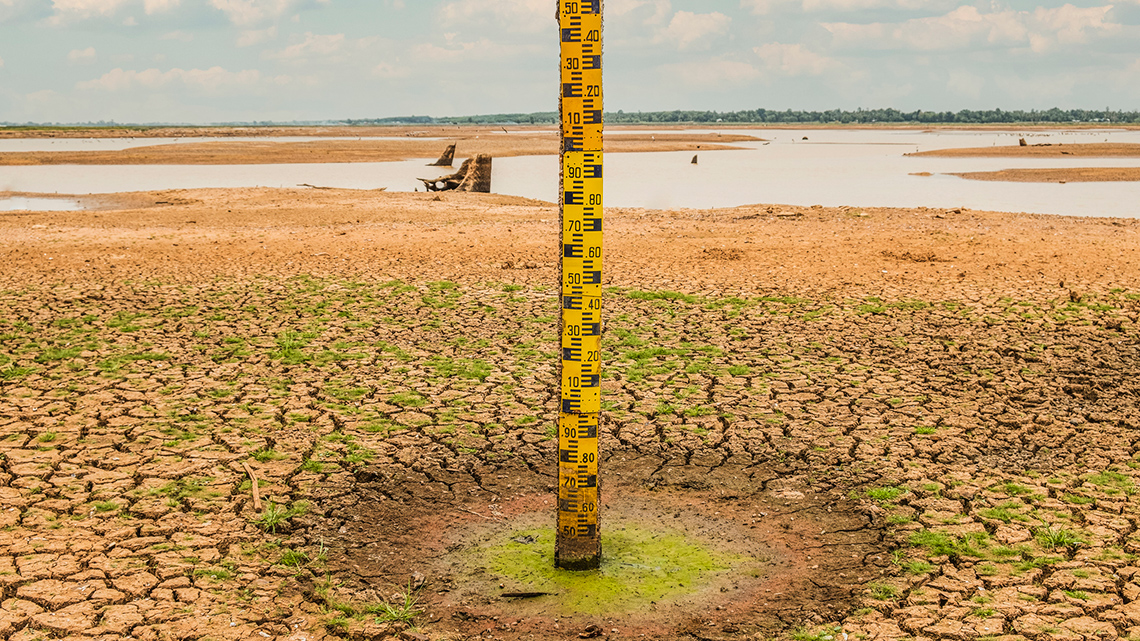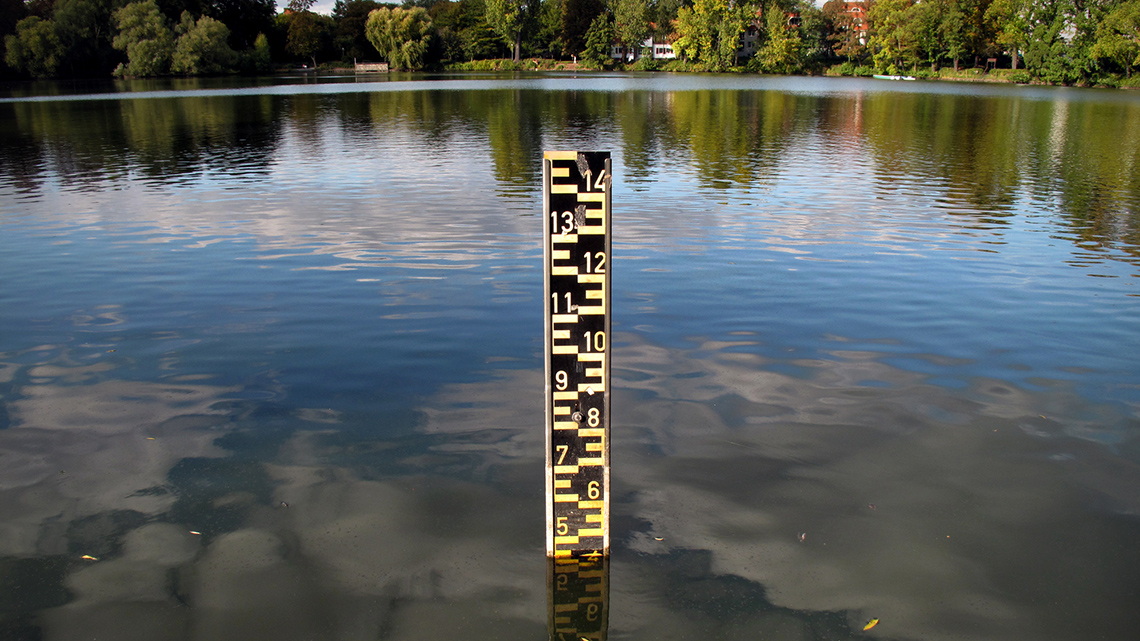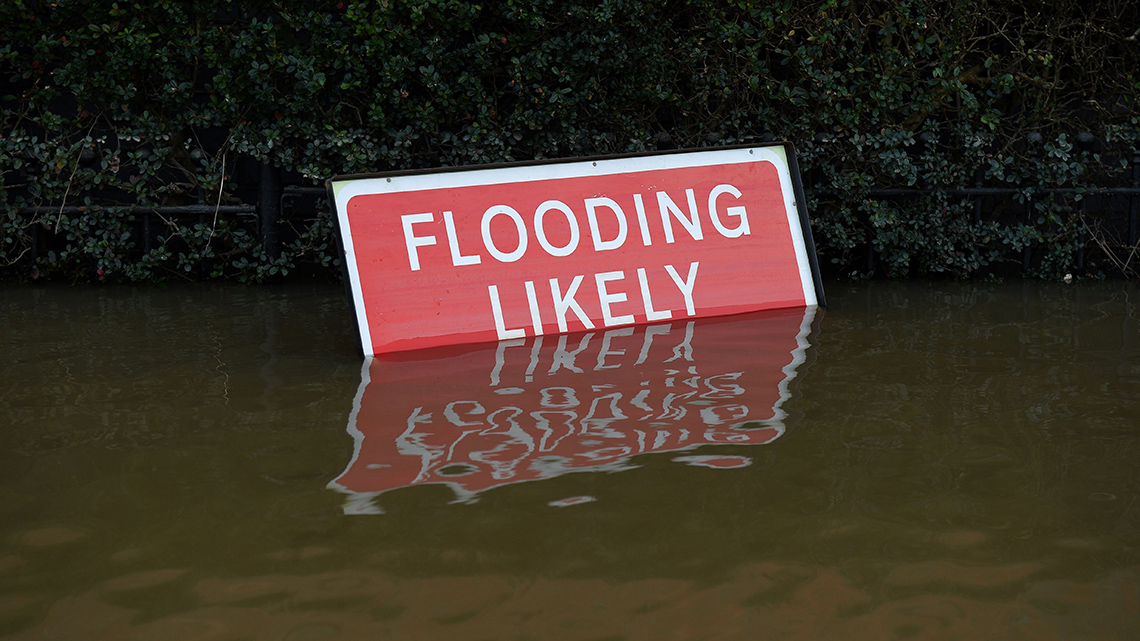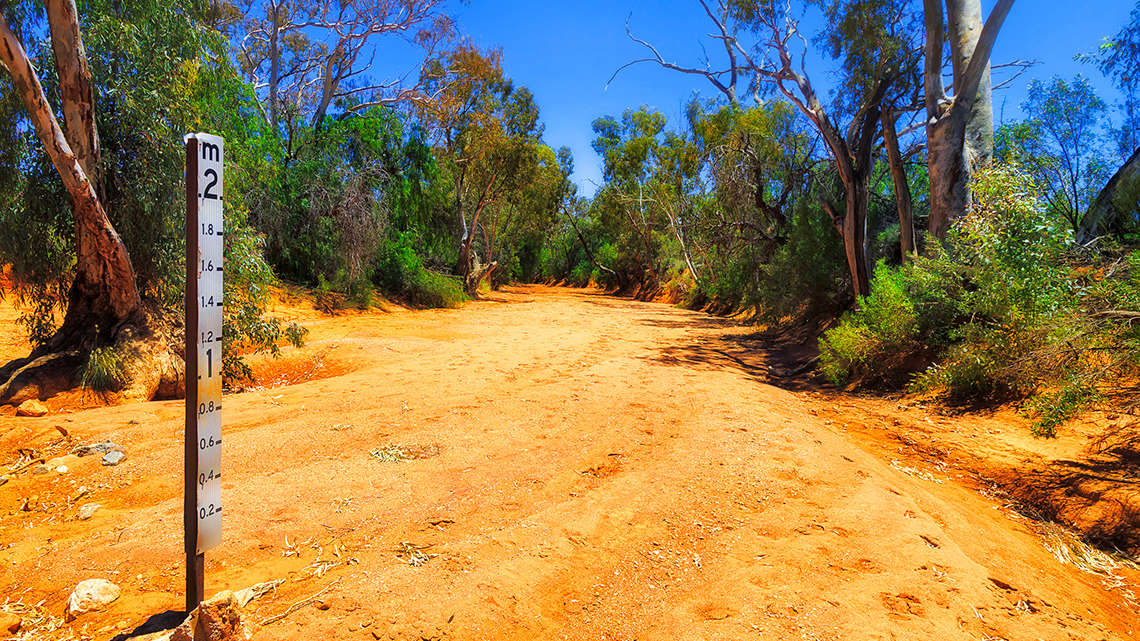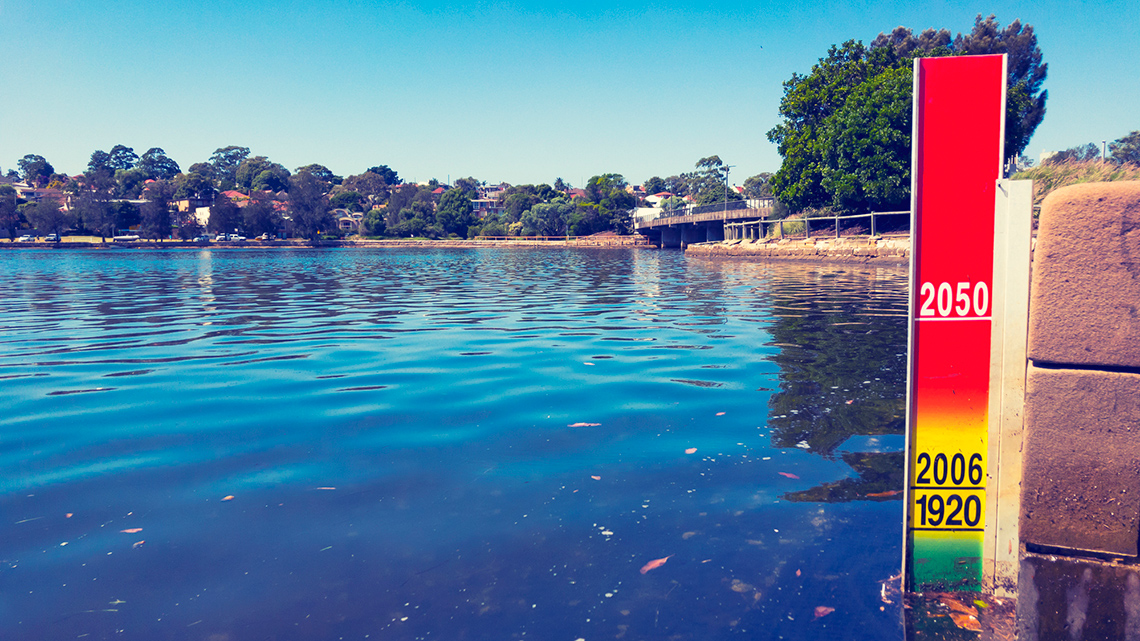Minds On
Quickly changing levels of water in rivers, lakes, and oceans

Water levels around the world are always changing. When water levels become high, there is a risk of flooding for surrounding areas. When water levels drop too low, the area can no longer be a source of water for surrounding communities, which could be detrimental.

We can measure water levels using scales or gauges. A staff gauge is like a big ruler that is installed in a body of water to measure the water level. Explore the following images, which exhibit water level gauges and other water scales from around the world.
A carousel of five images. Image 1: A sign in the water which indicates the years 1920, 2006 and 2050. Image 2: A staff gauge in a lake. The top of the gauge is more than a metre above the lake surface. Image 3: A sign that reads “flooding likely” is half submerged under water. Image 4: A two metre tall staff gauge sits on a dry riverbed surrounded by trees. Image 5: A sign sits in the ocean near a wall marking the edge of an oceanfront property. It has green at the bottom at ocean level, yellow in the middle with the dates nineteen twenty and two thousand six, and red at the top with the date two thousand fifty.
Brainstorm
Brainstorm
Water levels are changing faster and more frequently than they have in past centuries. Brainstorm how you think humans and technologies are impacting water levels. What do you think causes water levels to raise or lower?
Brainstorm your ideas orally, digitally, in print, or in another method of your choice.
Action
Exploring the water table
The water table is the depth at which loose rock, gravel, and soil below the Earth’s surface is saturated with water. It is the boundary between the saturated and unsaturated zones underground.

Water table is a water saturated underground soil layer located many metres below the surface
The soil surface above the water table is called the unsaturated zone, where both oxygen and water fill the spaces between sediments.
The shape and height of the water table is influenced by land surface that lies above it. The water that is found in the water table comes from precipitation.
Press ‘Precipitation’ to access a definition of precipitation.
Precipitation is solid or liquid water that falls from clouds to the ground, such as rain or snow.
Factors that affect water tables
The level of the water table changes all the time as the water moves underground and empties into lakes, ponds, and rivers. Groundwater needs to be regularly replenished or it will begin to deplete over time and the water table will lower. Precipitation, which increases or decreases with seasonal changes, is one cause of the water table lowering and rising. As water tables are filled by rainwater runoff and melting snow, the water table gets higher. A lack of precipitation will lower the water table.
Press the following tabs to explore the factors that affect water tables.
The shape of the water table is affected by the land that is above it. The water table curves up over hills and lowers under valleys. Rivers and lakes are formed where the water table meets the surface of the land.
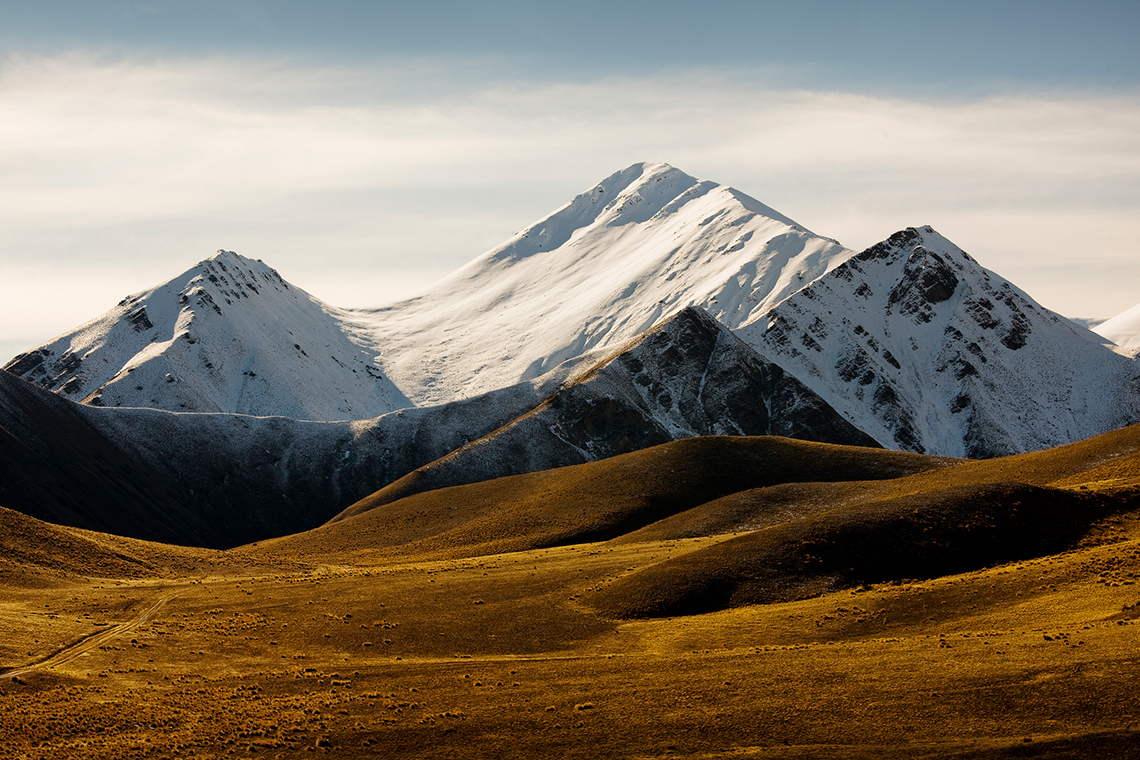
When humans continuously withdraw water from the ground, the water tables experience a reduction in size which drains the reservoir of water. There is concern that as the water table rapidly declines, it could potentially run dry in some areas.

A diagram shows three layers of ground. From top to bottom, they are grass, dry ground, and water-saturated ground. Two wells descend to different depths in the ground. The well on the left, labeled “dry well,” begins above ground and ends in the dry ground. No water is coming out of the well. The well on the right, labeled “producing well,” begins above ground and ends in the water-saturated ground. Water is coming out of the top of the well.
Sometimes high seasonal rainfall can cause high-water tables, which becomes an issue for homeowners. A high-water table is likely in an area where the soil is not well drained and the water tables received more water than they can drain off. This can cause a multitude of issues, such as: basement flooding, mosquito infestation, septic system failure, and destruction of crops. During late winter, when snow melts, the water table rises.
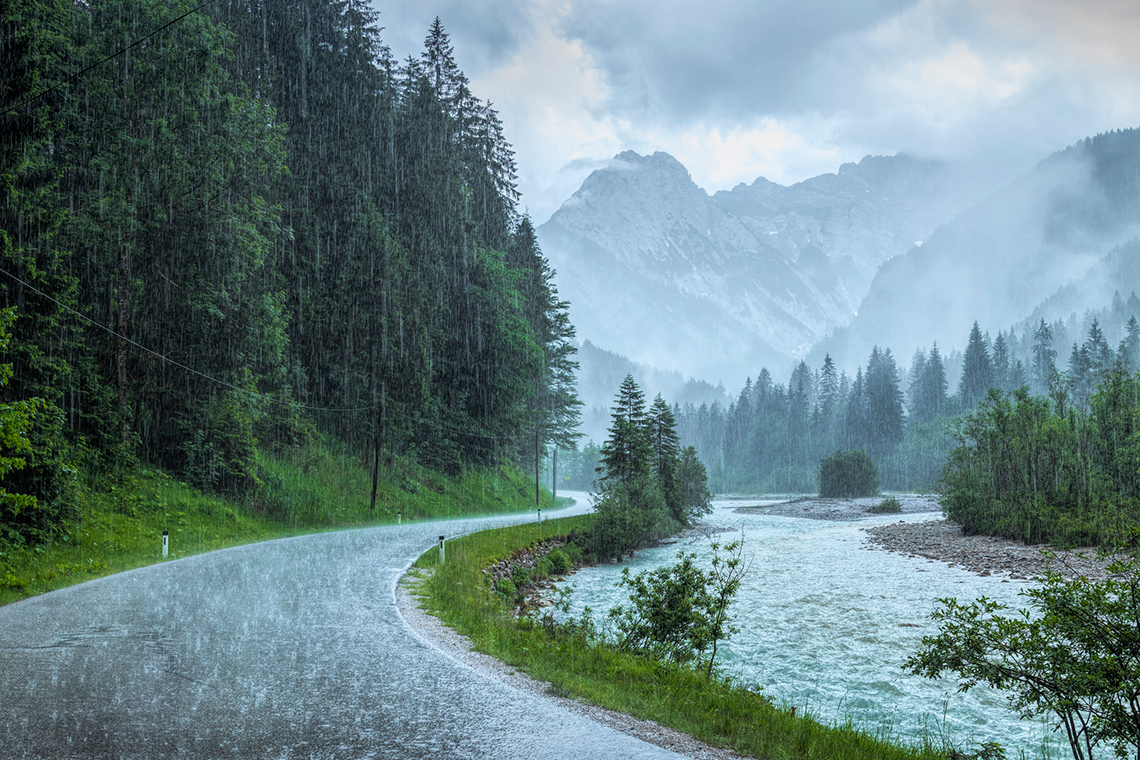
In the summer, the water table falls because plants use the water from the soil to grow. The water used by plants does not reach the water table.
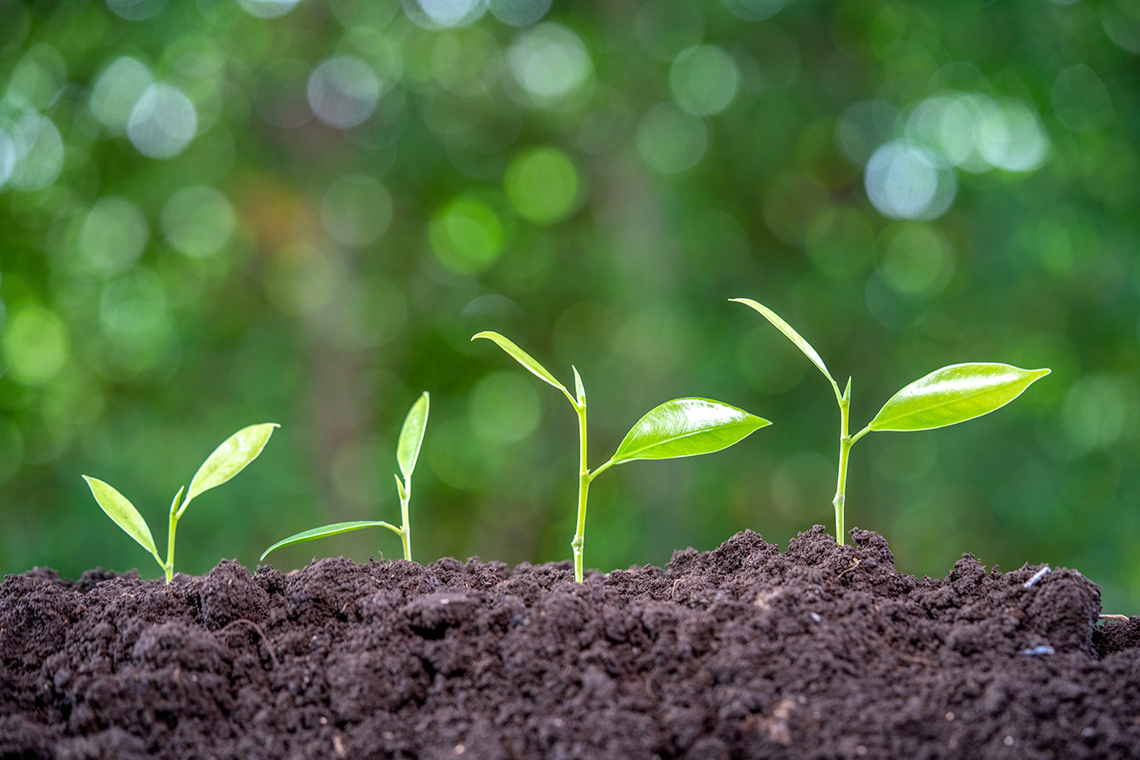
Contaminates such as salt or fertilizers can enter the groundwater and contaminate the water, making it unsuitable for drinking or irrigation.
Lawn and garden fertilizers enter the groundwater when it rains. This contaminated rain runoff leaches into rivers that feed the water table.
Fracking is the process of drilling into the Earth and injecting water to open cracks and fissures and be able to extract oil. Fracking contaminates the water table and pollutes the water in the surrounding area.
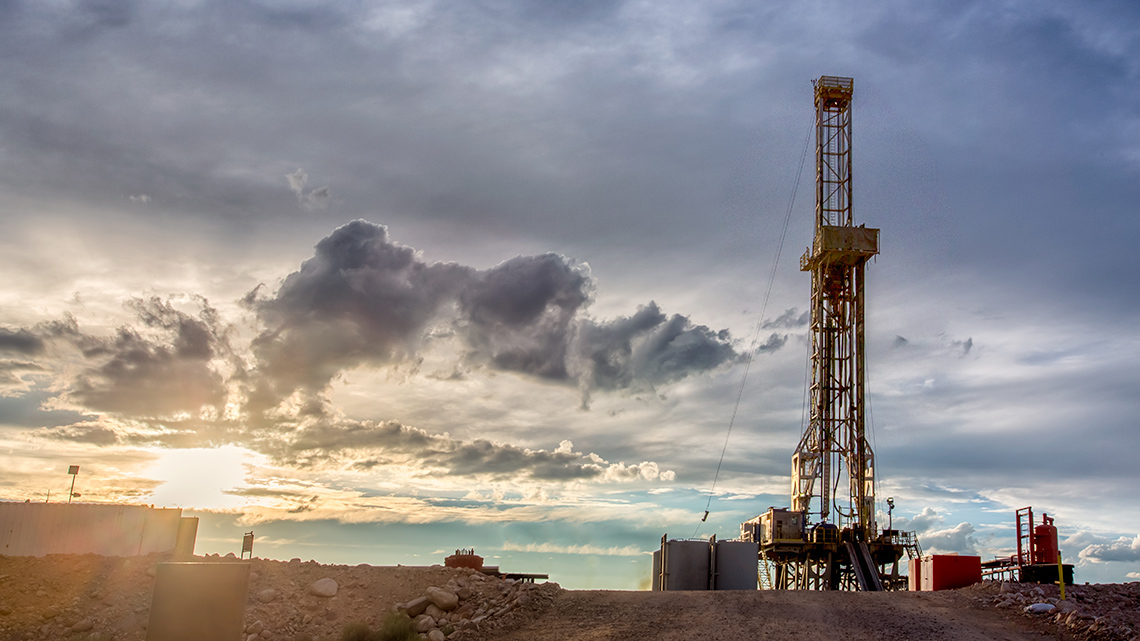
Fertilizer runoff poses a health problem because it adds bacteria to lakes and streams that feed the water table. Homeowners who use a well as their water source need to use salt to soften the water. The wastewater from the salt treatment stays on top of the soil, leaching bacteria into the ground and waterways, which can pose a problem to the water table.
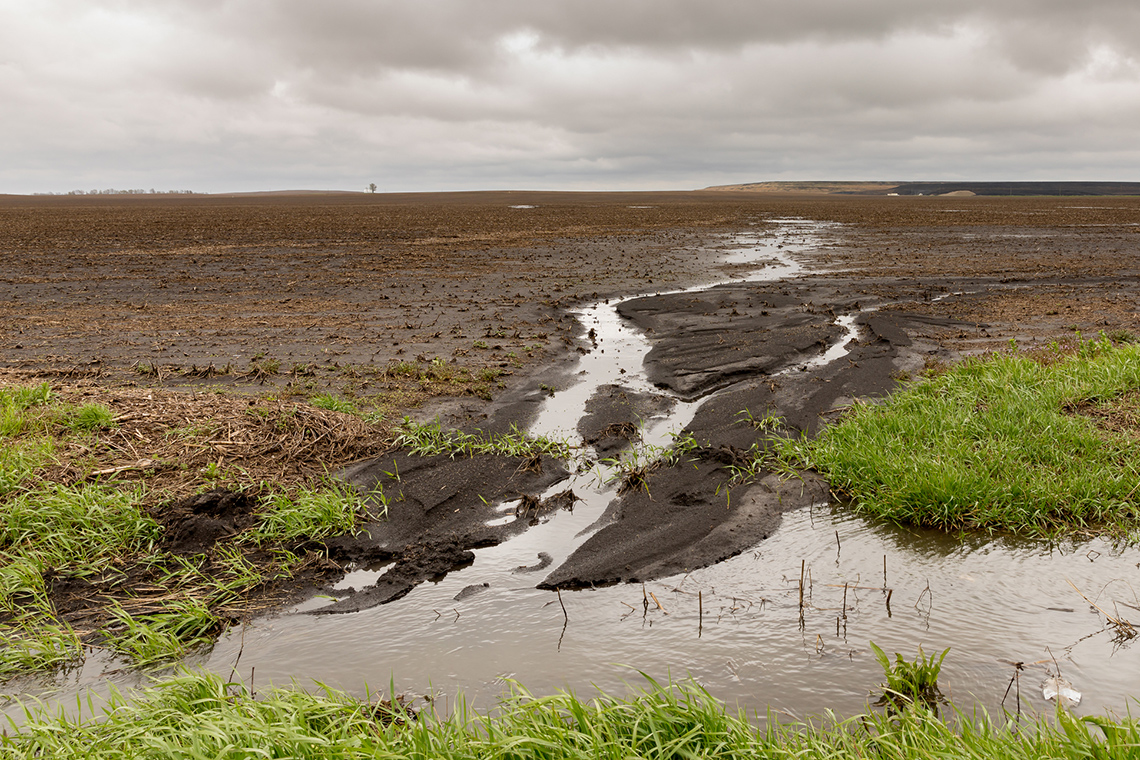
Pause and Reflect
Pause and reflect

Which of the factors mentioned in this learning activity can permanently impact a water table, in your opinion?
Record your ideas in a notebook or another method of your choice.
Press ‘Sample Answer’ to access a possible answer.
Any of the impacts that were labelled human impacts, such as: bacteria, contamination, and water withdrawal, can permanently impact the water table. Humans need to consider how they can live sustainably above the water table, and thoughtfully take water from the ground to avoid long-lasting impacts.
Should we care?
Why should we care about the water tables?
NASA recently released a study that indicated that water storage around the world was depleting. Many countries, including India, China, the United States, and France, have passed their sustainable water consumption – which means they are removing and consuming more water than they have in reservoirs.
Pause and Reflect
Pause and reflect
The amount of water being removed has caused stress on water tables and NASA is reminding everyone that “there is not an infinite supply of water” around the world. Water tables take thousands of years to accumulate precipitation and are being depleted at a much faster rate. Explore the map below and record three important details (positive or negative) that you notice about water storage around the world. Record these ideas in a method of your choice.
Click the image to enlarge in a new window.
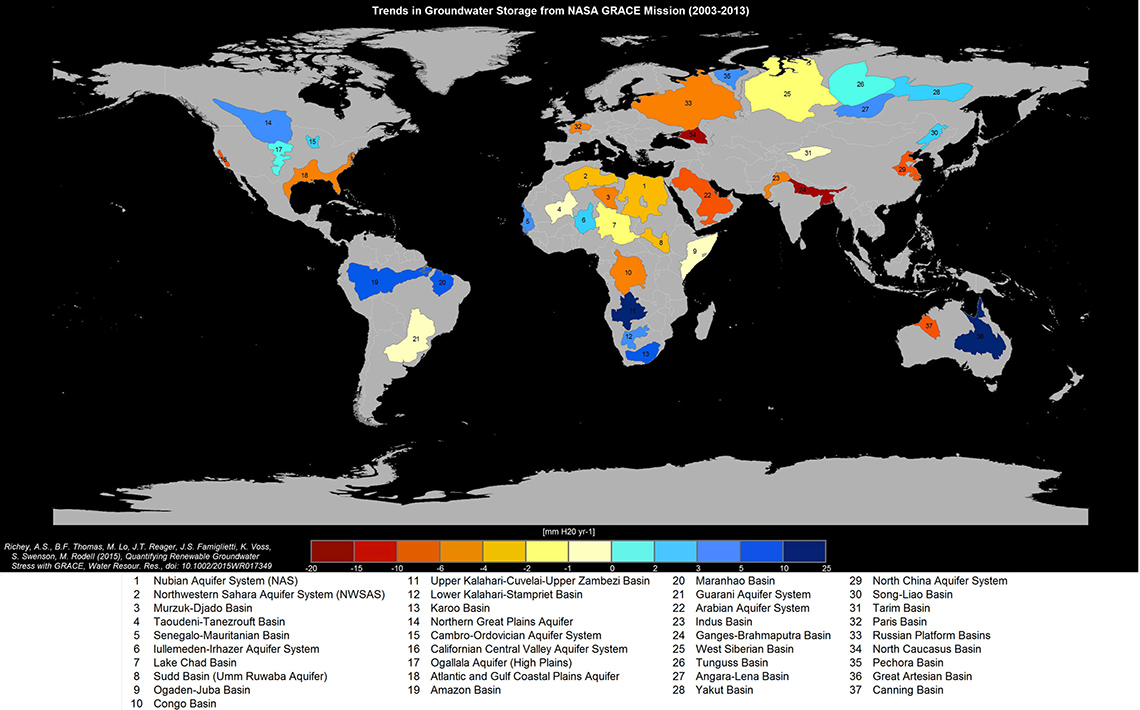 Description
Description
Groundwater storage trends for Earth’s 37 largest aquifers. Of these, 21 have exceeded sustainability tipping points and are being depleted, with 13 considered significantly distressed, threatening regional water security and resilience.
Global connection
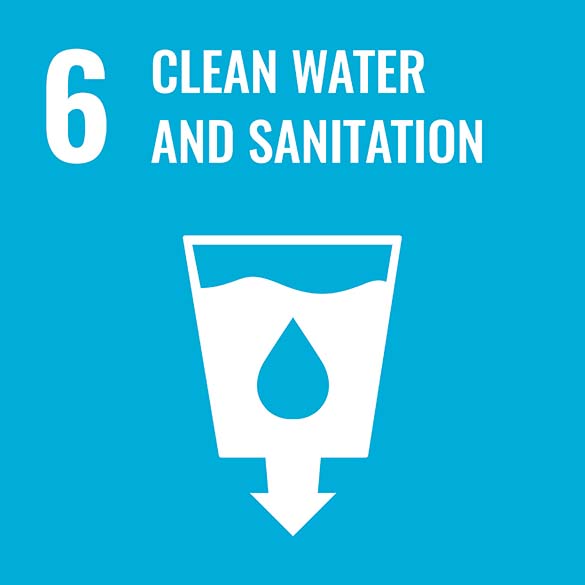
The United Nations (UN) is a group of many countries from around the world that have come together to create a better future for people and the environment. They have created 17 goals called the Sustainable Development Goals.
This learning activity is connected to Goal #6: Clean Water and Sanitation. This means everyone should have Safe drinking water and sanitation. Having clean water affects not only health but things like reducing poverty, having food security, and having a sustainable ecosystem.
Indigenous Knowledge and protecting water tables
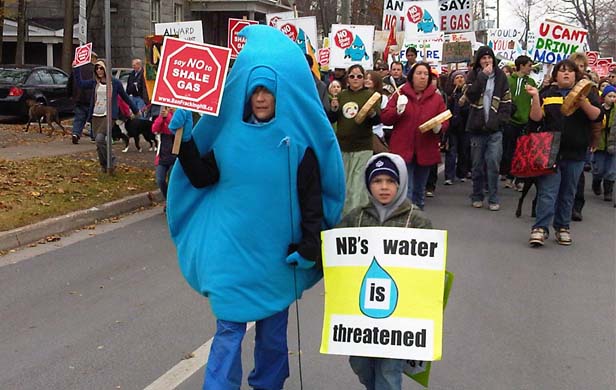
Anti-fracking protest in New Brunswick
There are many ways that human actions lead to the contamination of the water table. One of these human actions is fracking.
Press ‘Fracking’ to access a definition of fracking.
Fracking is the action of extracting natural gas or oil from inside an underground rock called shale. To extract this gas or oil, a hole is drilled through many layers of rock.
Fracking causes the Earth to release oil and gas. The oil and gas released from the Earth during fracking is harmful to the environment and contaminates the water table.
The First Nations, Métis, and Inuit knowledges and values about water, connections to water, and ways of managing water resources are valuable for developing sustainable ways to protecting the water tables.
With their skills and knowledge of how to live on, and learn from, the land, Indigenous communities were able to survive and thrive on their lands for as long as can be remembered.
The knowledge held by Indigenous communities is often referred to as “Indigenous Knowledge” or “Traditional Knowledge.” Indigenous Knowledge is the knowledge that comes from generations of particular people living in a specific area. These understandings and observations about the local environment are reflected in a community’s practices, worldviews, laws, ceremonies, languages and traditions which are passed on from generation to generation.
The importance of Indigenous Knowledge
Consider this information about Indigenous Knowledge and answer one of the following questions in a method of your choice.
- Why would it be important to learn from Indigenous Knowledge and practices when managing water resources?
- How can learning and understanding different perspectives help to reduce human actions that lead to harming the environment and contaminating water?
Water table erosion and deposition
Water is a major agent of erosion that has shaped the Earth’s surface. Water erosion and deposition has created some of the most unique and beautiful structures on Earth.
Press the following tabs to access a few important definitions.
In this component of the learning activity, you will be investigating a mini-stream table to explore how water erodes and deposits sediment.
Observation checklist
I can record observations by:
Let’s experiment!
Safety
Before you explore the following experiment, let’s perform a safety check.
Hands-on Science
Hands-on science
Now you will try an experiment for testing the effect of water on erosion and deposition within the water tables. Press the following tabs to access the materials needed and experimental procedure for the “Water’s Effect on Erosion and Deposition Within the Water Tables” experiment. If you do not have the materials, read through the following material and examine the images.
- paint tray or paint tray liner (can be purchased at dollar store or any hardware store)
- sand (real sand or play sand)
- pebbles or rocks (if using rocks from outside, give them a rinse/wash ahead of time)
- a small pitcher or measuring cup for pouring water (or another way to slowly pour water)

Be sure to set up your water table before you begin. To set up your water table:
- Mix two cups of sand with one cup of pebbles or rocks.
- Place the sand and rock mixture in the top portion of the paint tray (the ridged part where it slopes downward) and pack it down.

Next, add the stream of water.

- Pour a small but constant trickle of water over the sand and rock mixture. (If your paint tray gets full, either dump out some of the water or absorb it using paper towel). Record what happened on the lab sheet.

- Pour a larger but constant stream of water (again) over the sand and rock mixture, this time pouring a little faster than before. (If your paint tray is full, either dump out some of the water or absorb it using paper towel). Record what happened on the lab sheet.
After all of observations have been recorded, it is important to clean up all the materials.
Complete the Lab Sheet: Water’s Effect on Erosion and Deposition Within the Water Tables in your notebook or using the following fillable and printable document. If you would like, you can use speech-to-text or audio recording tools to record your thoughts.
|
Materials needed |
|
|
Hypothesis – what do you think will happen? |
|
|
Procedure |
Be sure to set up your water table before you begin. To set up your water table: 1. Mix two cups of sand with one cup of pebbles or rocks. 2. Place the sand and rock mixture in the top portion of the paint tray (the ridged part where it slopes downward) and pack it down. Next, add the stream of water. 3. Pour a small but constant trickle of water over the sand and rock mixture. (If your paint tray gets full, either dump out some of the water or absorb it using paper towel). Record what happened on the lab sheet. 4. Pour a larger but constant stream of water (again) over the sand and rock mixture, this time pouring a little faster than before. (If your paint tray is full, either dump out some of the water or absorb it using paper towel). Record what happened on the lab sheet. After all of observations have been recorded, it is important to clean up all the materials. |
|
Observations *Remember observations can be recorded with pictures, numbers, and/or words! |
1. What happened when you trickled some water over the sand and pebble mixture? Draw a picture and label / record what happened. 2. What happened when you more consistently poured some water over the sand and pebble mixture? Draw a picture and label / record what happened. |
|
Conclusions |
|
|
Questions |
1. What did you notice was forming at the bottom of the paint tray (opposite of where the sand was)? What about the top where the sand was? 2. Was any sand/ pebbles taken down to the bottom of the paint tray? This would be sediment. 3. In the second trial, what did you notice about how quickly the water travelled from the top to the bottom of the paint tray? Why do you think this is? 4. What type of weather might these two trials represent? 5. How did the results at the bottom of the paint tray change with the two different water amounts (trickle vs. stream)? Why do you think this was? How does this represent a river or stream in real life? |
Press the ‘Activity’ button to access Lab sheet: Water’s Effect on Erosion and Deposition Within the Water Tables.
Answer key
When you are done, press ‘Answer Key’ to access the answers to questions one to four in the Questions section of the Lab Sheet.
1. What did you notice was forming at the bottom of the paint tray (opposite of where the sand was)? What about the top where the sand was?
A pile of sand was forming. After water was absorbed, the sand was beginning to form a “stream bed” or area that could hold water like a stream.
2. Was any sand/pebbles taken down to the bottom of the paint tray? This would be sediment.
Mostly only the sand was being carried downstream by the water.
3. In the second trial, what did you notice about how quickly the water travelled from the top to the bottom of the paint tray? Why do you think this is?
The soil had already been saturated and a “stream bed” was forming – which meant the water flowed to the bottom more quickly and the stream bed got bigger.
4. What type of weather might these two trials represent?
This could represent a light rain vs. a heavier rain.
Consolidation
Water and the world

As you have seen, water is a constructive force by building landforms through the process of deposition. Water is a destructive force through the process of erosion. Water can remove soil and sand through erosion, which can create stream beds, meanders, sea caves, and sea arches.
Task 1: Check your understanding!
Task 2: Create a mini presentation
Create a mini presentation (orally, digitally, in print, or as an audio recording) about how the water table is impacted by humans and how this impacts the environment and our future. How would this contribute to global water availability? Be sure to include what others can do to help.
Presentation checklist
Did I explain my learning by:
Create your presentation in a method of your choice (orally, digitally, in print, or as an audio recording).
Reflection
As you read the following descriptions, select the one that best describes your current understanding of the learning in this activity. Press the corresponding button once you have made your choice.
I feel…
Now, expand on your ideas by recording your thoughts using a voice recorder, speech-to-text, or writing tool.
When you review your notes on this learning activity later, reflect on whether you would select a different description based on your further review of the material in this learning activity.
